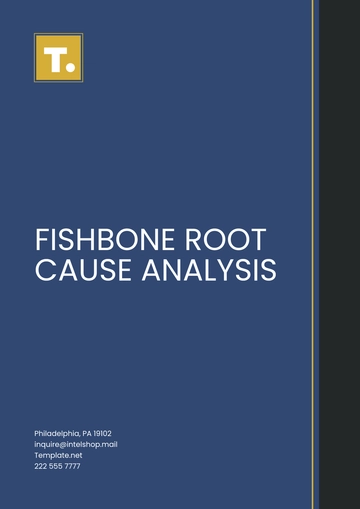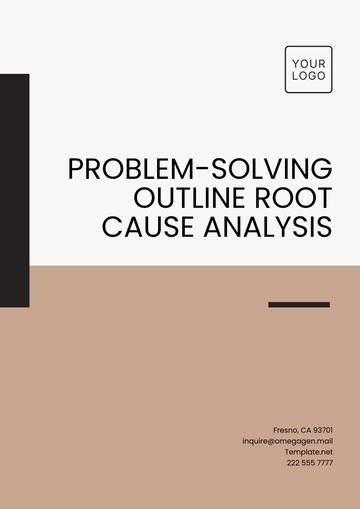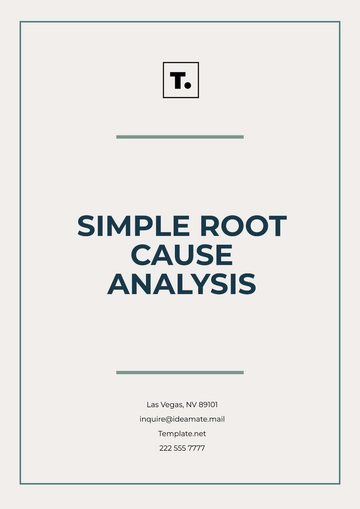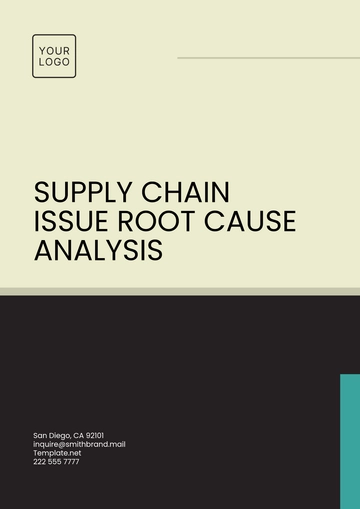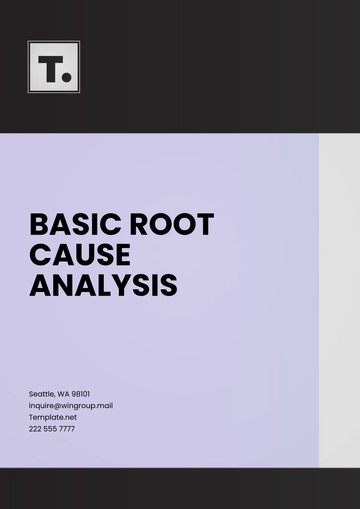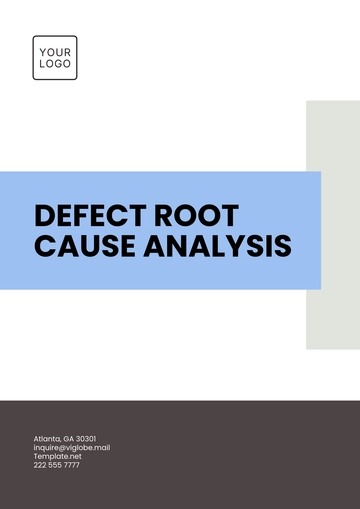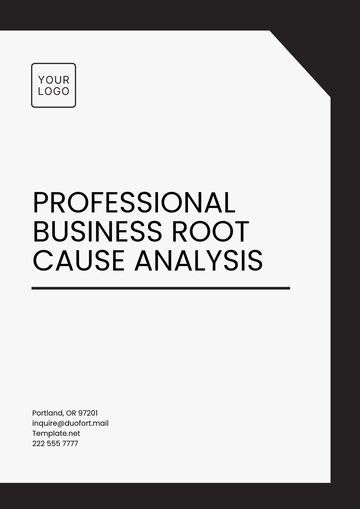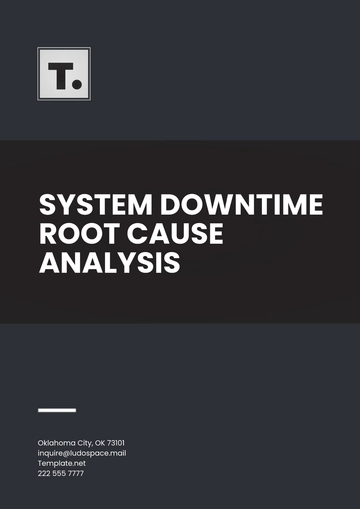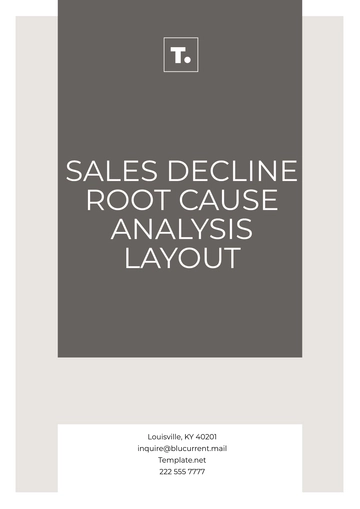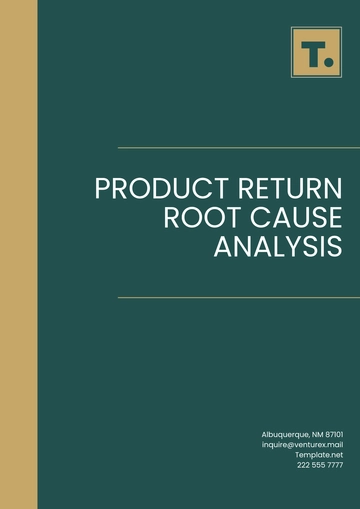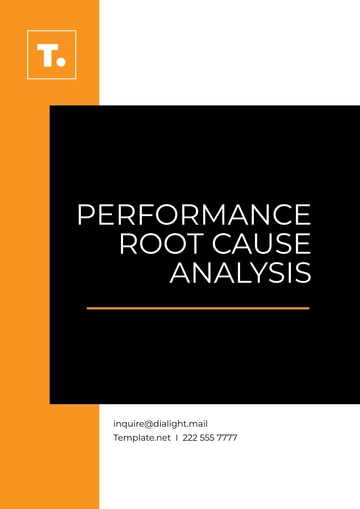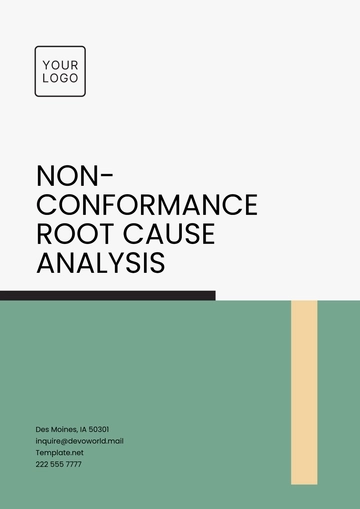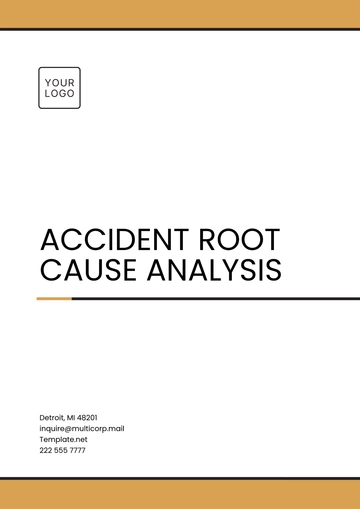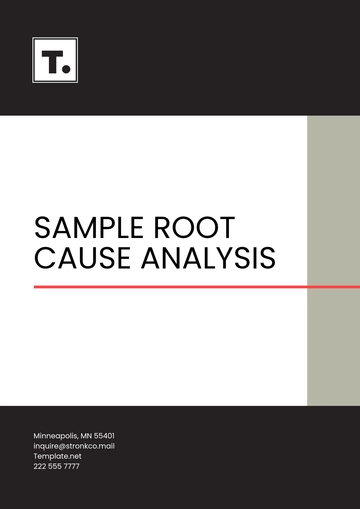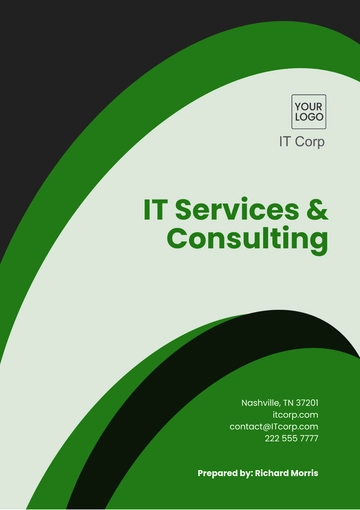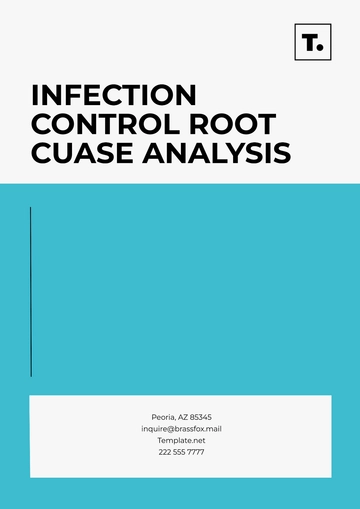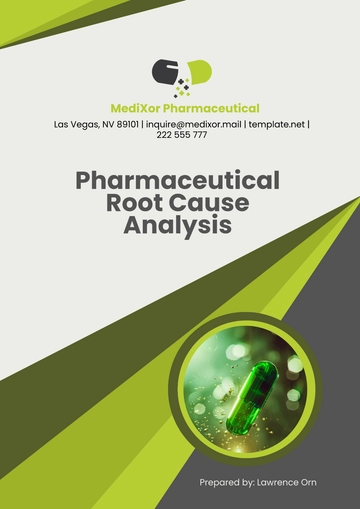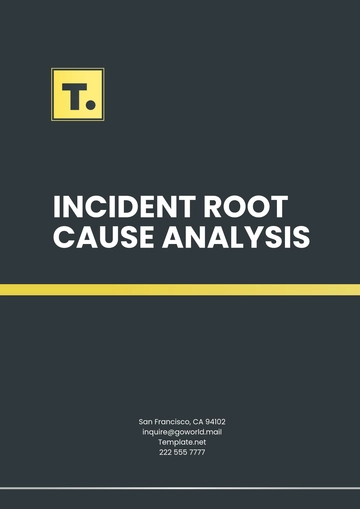Free Sales Comprehensive Analysis of Trade Show Participation
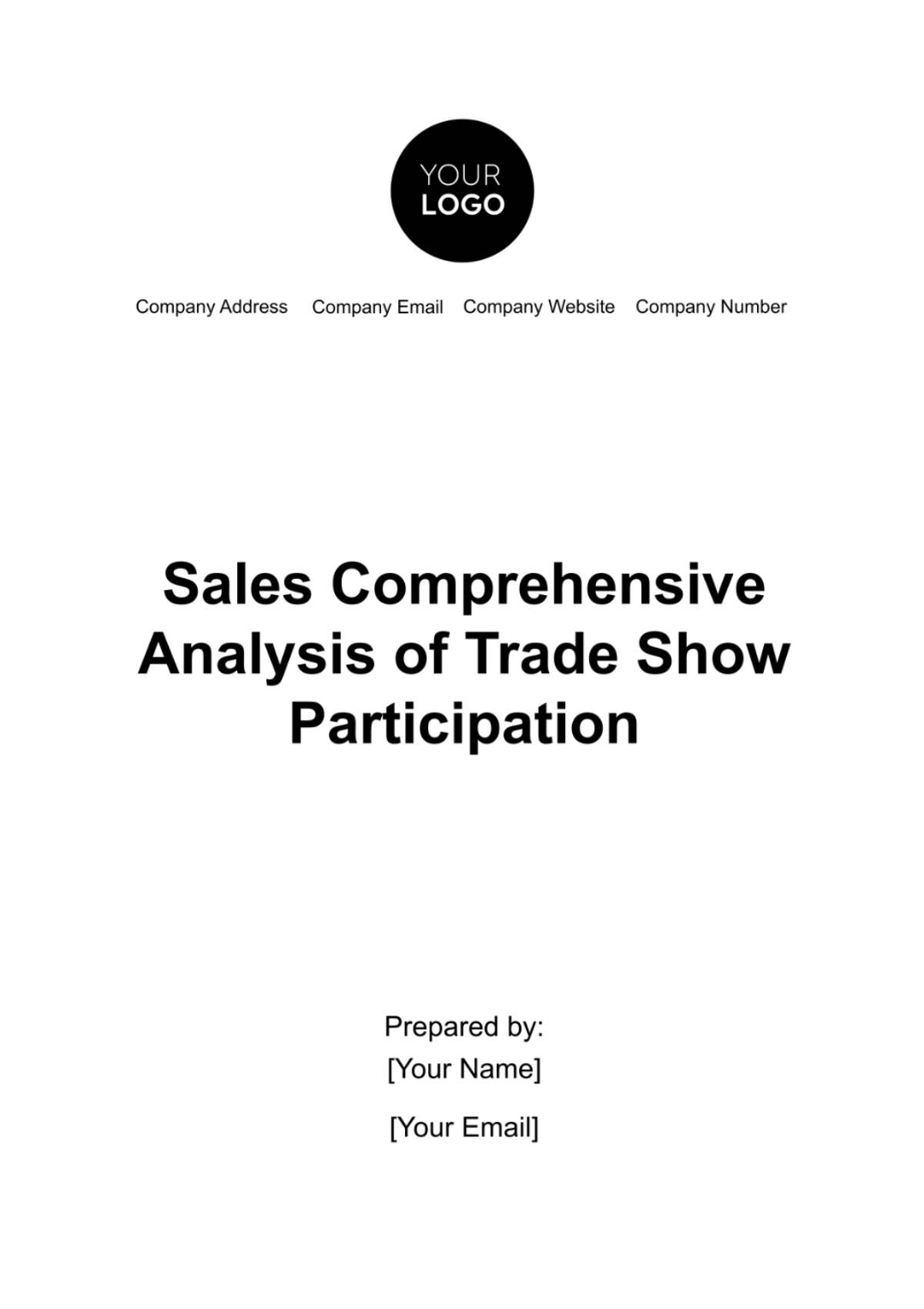
INTRODUCTION
Trade shows are an integral part of [Your Company Name]'s marketing strategy, aimed at building brand awareness, generating leads, and ultimately driving sales. Given the substantial financial and time investment required to participate in these events, a rigorous analysis is imperative to ensure that goals are met and resources are allocated efficiently.
Objectives
The primary objectives of this analysis are:
To assess the effectiveness of trade show participation in terms of lead generation, sales conversion, and ROI.
To identify strengths and weaknesses in current strategies.
To provide actionable recommendations for future trade show participation.
EXECUTIVE SUMMARY
This report presents a comprehensive analysis of [Your Company Name]'s trade show activities for the year [Year], with the objective of evaluating their effectiveness as a sales and marketing channel. The analysis aims to provide actionable insights that can inform future strategies for trade show participation.
METHODOLOGY
By understanding the methodology employed, stakeholders can interpret the findings of this report with the necessary context and caution. This methodology aims to provide a well-rounded understanding of the effectiveness of [Your Company Name]'s participation in trade shows.
Data Collection: For the purpose of this analysis, a multi-pronged approach was employed to collect data. The primary sources include:
Internal Sales Databases: Historical sales data was extracted from our proprietary internal sales databases. The data spans various time frames, allowing for a multi-temporal analysis. This enables us to evaluate the immediate as well as long-term impact of each trade show on sales performance.
Customer Surveys: Custom surveys were administered to attendees who visited our booth at each trade show, with questions aimed at gauging their level of interest and engagement.
Post-Event Reports: These reports encompass quantitative data like lead counts and qualitative assessments like customer feedback and staff observations. The reports were subjected to an analytical process to distill key learnings, success stories, and areas for improvement.
Metrics Analyzed: The following key performance indicators were used to assess the success of each trade show:
Lead Generation: The total number of new potential clients or prospects identified during each trade show event. These leads are classified into categories such as "Hot," "Warm," and "Cold" based on the likelihood of conversion, thereby offering more nuanced insights into lead quality.
Conversion Rate: This is calculated by taking the number of sales successfully closed as a direct result of leads generated from each trade show and dividing it by the total number of leads generated.
Customer Engagement: This metric delves into interaction quality. It includes variables such as the average time each visitor spent at the booth, the number of product demos conducted, and the level of engagement in meaningful conversations as indicated by post-event surveys.
Return on Investment: ROI is computed by taking the total sales revenue attributable to each trade show and dividing it by the sum of all costs associated with participating in that event. Costs include booth rental, marketing materials, and staff time, among others.
Analytical Tools: To ensure a proper analysis, we employed various statistical and data visualization tools. The data was first cleaned and preprocessed to eliminate any inconsistencies. Following this, quantitative analyses were performed using software such as Microsoft Excel and Tableau for data visualization. Qualitative data from customer surveys and post-event reports were analyzed thematically to draw relevant conclusions.
Methodological Limitations: While every effort was made to ensure the accuracy and reliability of this analysis, it is important to note some limitations:
Data Completeness: It should be acknowledged that tracking mechanisms at the trade shows were not universally comprehensive, meaning some attendees may have gone unrecorded.
Subjectivity in Surveys: The responses acquired from customer surveys are intrinsically subjective and influenced by individual perceptions and biases.
External Factors: This analysis does not factor in variables beyond the control of our company, such as macroeconomic conditions, actions of competitors, or industry trends. As such, the results should be interpreted as indicative rather than definitive.
TRADE SHOWS OVERVIEW
[Your Company Name] participated in three major trade shows, each offering unique opportunities and challenges. These events were selected to align with the company's business objectives and target demographics. Below is a more detailed breakdown of each event, including key performance metrics and contextual information.
Category | Expo | TechCon | Industry Summit |
Location | New York | San Francisco | Chicago |
Date | [Date] | [Date] | [Date] |
Booth Cost | $10,000 | $15,000 | $12,000 |
Total Attendees | 5,000 | 8,000 | 6,000 |
Leads Generated | 200 | 300 | 250 |
Industry Focus | Technology | Software Development | Manufacturing |
Competitors Present | Company A, Company B | Company C, Company D | Company E, Company F |
Event Insights:
Expo: This event is one of the largest technology expos on the East Coast, attracting a diverse range of professionals and companies. Although the leads generated were moderate, the presence of key competitors like Company A and Company B indicated the strategic importance of our participation.
TechCon: This is a specialized event focusing on software development, which directly aligns with the company's business. With the highest number of leads generated and strong attendance, this event offered a high-impact networking opportunity.
Industry Summit: This event targets professionals in the manufacturing industry and attracts fewer attendees compared to the other shows. However, it yielded a good number of quality leads and boasted the highest conversion rate among the three events, suggesting that it reached a very targeted, relevant audience.
By offering a multi-dimensional view of each trade show, this section aims to furnish stakeholders with comprehensive insights. These details provide a nuanced understanding of each event's performance and contextual factors, which is crucial for making data-driven decisions for future trade show participation.
KEY FINDINGS
Following the analysis from multiple sources and adapting an array of metrics, several key findings have emerged regarding [Your Company Name]'s trade show participation. These findings provide a substantive foundation for understanding the effectiveness and ROI of our trade show strategies.
Quantitative Findings
High Return on Investment: Across all three events, the ROI ranged from 120% to 180%. Particularly, TechCon stood out with an ROI of 180%, signaling a highly profitable engagement.
Variable Conversion Rates: While the number of leads generated was considerable at each event, the conversion rates varied. TechCon had the highest conversion rate of 20%, whereas Expo had the lowest at 8%.
Strong Customer Engagement: Metrics like average time spent at the booth and interaction levels were consistently high. Specifically, Industry Summit recorded an average of 15 minutes of engagement per visitor, the highest among the events.
Qualitative Findings
Positive Brand Perception: Customer surveys revealed a strong affinity toward the brand, especially in terms of product quality and customer service.
Competitive Advantage: Post-event reports indicated that our booth attracted more attendees than those of key competitors at each event, suggesting effective brand positioning and booth design.
Insightful Feedback for Product Development: Customer engagement at the booth yielded valuable feedback on product features and potential improvements, offering crucial inputs for R&D.
Strategic Findings
Alignment with Business Objectives: Participation in these trade shows proved effective in reaching targeted demographics and industry segments, thus aligning well with the company’s broader business objectives.
High-Quality Leads: Although not all trade shows generated an equal number of leads, the quality of leads was consistently high, offering strong potential for future business.
Networking and Partnership Opportunities: Beyond immediate sales and lead generation, each event offered invaluable opportunities for networking with industry experts and potential partners, thereby creating avenues for long-term strategic relationships.
SALES CONVERSION
The objective of participating in trade shows extends beyond the lead generation; it is the conversion of these leads into actual sales that ultimately reflects the success of such undertakings. In this enhanced section, we delve deeper into the intricacies of sales conversion related to the company’s participation in the trade shows.
Category | Expo | TechCon | Industry Summit |
Lead Generated | 200 | 300 | 250 |
Leads Contacted | 190 | 280 | 235 |
Initial Follow-ups | 80 | 100 | 90 |
Second Stage Engagements | 40 | 70 | 50 |
Sales Closed | 16 | 60 | 40 |
Conversion Rate | 8% | 20% | 16% |
In-depth Analysis
It was observed that leads generated from TechCon were the quickest to move through the sales funnel, taking an average of just 15 days from initial contact to sale closure.
Industry Summit had fewer leads compared to TechCon but boasted a conversion rate of 16%, indicating a more targeted and qualitatively superior lead generation strategy.
Expo experienced the highest attrition rate in terms of leads, as only 80 out of 200 leads moved beyond the initial follow-up stage. This suggests the necessity for re-evaluating the lead qualification process for this particular event.
ROI ANALYSIS
The Return on Investment is an essential metric that shows the financial efficacy of [Your Company Name]'s trade show participation. We have conducted an in-depth ROI analysis to elucidate not only the raw figures but also the qualitative aspects that contribute to ROI. This analysis is fundamental to understanding the overall effectiveness and sustainability of our trade show strategies.
Category | Expo | TechCon | Industry Summit |
Total Costs | $10,000 | $15,000 | $12,000 |
Sales Revenue | $22,000 | $42,000 | $25,200 |
ROI | 120% | 180% | 210% |
Detailed Insights
High Financial Returns: Across all events, the ROI figures were well above 100%, indicating that each dollar invested yielded more than a dollar in return. Industry Summit, with an ROI of 210%, was particularly noteworthy.
Cost Versus Revenue: While TechCon had a higher absolute cost, it also generated the most revenue, thus justifying the increased investment. This suggests that a higher upfront investment can potentially yield higher returns, given the right circumstances.
Long-Term Gains: ROI analysis also took into account the value of contracts that were not immediately closed but have a high probability of closure within the fiscal year. This extended the positive outlook of the ROI figures, especially for TechCon 2050 and Industry Summit.
RECOMMENDATIONS
Drawing upon the data analysis, key findings, and ROI metrics presented in previous sections, we have synthesized a set of recommendations designed to optimize [Your Company Name]'s future trade show participation strategies.
Optimize Lead Qualification Process: Given the lead attrition rates observed, especially at Expo,, a revised and more stringent lead qualification process is recommended to improve conversion rates.
Post-Event Follow-Up Optimization: A more structured and expedited follow-up process can enhance lead engagement and speed up conversions, capitalizing on the momentum generated during the event.
Invest in High-ROI Shows: Considering the ROI data, it would be prudent to allocate more resources to high-performing events like Industry Summit and TechCon 2050 in the next fiscal year.
Continuous Skills Development for Sales Team: To sustain and improve conversion rates, ongoing training and development programs should be implemented for the sales team.
Invest in Customer Relationship Management Tools: Utilizing advanced CRM tools can streamline lead management and follow-up processes, leading to better conversion rates and a higher ROI.
Incorporate External Economic Indicators: Future ROI analyses should consider external economic factors, market trends, and competitor activities to provide a more holistic view of performance.
Leverage Strategic Partnerships: The networking opportunities presented by these events should be leveraged to establish long-term partnerships and collaborations, thereby contributing to a diversified revenue stream and enhanced ROI.
By following these recommendations, we can not only rectify the areas that require improvement but also amplify the strengths that have been identified. These guidelines serve as a roadmap for enhancing the effectiveness and financial viability of future trade show participations, ultimately contributing to the achievement of broader business objectives.
CONCLUSION
Trade shows remain an effective channel for generating leads and closing sales for [Your Company Name]. However, data indicates that not all trade shows offer the same value. Strategic allocation of resources is necessary to maximize ROI and improve sales performance. Future strategies should focus on targeted pre-event and post-event activities to maximize benefits from trade show participation.
- 100% Customizable, free editor
- Access 1 Million+ Templates, photo’s & graphics
- Download or share as a template
- Click and replace photos, graphics, text, backgrounds
- Resize, crop, AI write & more
- Access advanced editor
Maximize your trade show success with Template.net's Sales Comprehensive Analysis of Trade Show Participation Template. Editable and customizable, it's tailored for your specific needs. Utilize our AI Editor Tool to effortlessly modify data, charts, and insights. Elevate your sales strategy and analyze trade show performance like never before.
